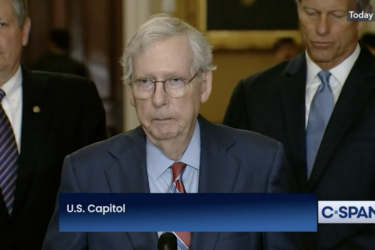
Some low-income seniors who qualify for both Medicare and Medicaid — the dual eligibles — have the chance to age in place in their communities thanks to Medicaid’s coverage of long term services and supports (LTSS). This is especially important for older adults who are juggling multiple chronic conditions and may require help with activities of daily living, like bathing, dressing, or eating.
This is a population at high risk for needing expensive institutional care, and is not the preferred site of care for most people. Community-based LTSS avoids institutionalizing many older adults and is a more cost-effective solution to the growing aging population.
Understanding the senior population served by Medicaid helps stakeholders create more efficient care delivery systems, according to a new issue brief from the Kaiser Family Foundation. This knowledge takes on greater importance as states develop new systems of integrated and managed care for older adults.
Analysts looked at the rates of need for LTSS among seniors who live in the community, using data from the 2011 National Health and Aging Trends Study (NHATS). They compared dual eligible beneficiaries to low-income seniors without Medicaid. They also looked at higher income seniors without Medicaid, to understand the role of income.
It’s probably no surprise that the report’s authors found that poor health and the need for LTSS are closely related. Overall, over half (57 percent) of seniors with an LTSS need live with at least three chronic conditions (such as high blood pressure, arthritis, osteoporosis, diabetes, or heart disease). This rate is similarly high among dual eligible beneficiaries and among low-income seniors without Medicaid but with an LTSS need. The data confirms a strong relationship between physical illness and LTSS needs. Dual eligible beneficiaries are more likely than low-income seniors without Medicaid to say that their overall health is fair or poor.
Mobility problems are also common among seniors with LTSS needs. More than half (53 percent) of dual eligible beneficiaries with a LTSS need said they require a mobility device in or outside the home. More older (age 85-plus) seniors than younger seniors (ages 65-74) need some type of cane, walker or other device. The data again shows a greater need among dual eligibles than those not receiving Medicaid.
Roughly a third of all seniors (32 percent) in the study were identified as having cognitive impairment. Among dual eligibles, the rate was 47 percent, significantly higher than low-income seniors without Medicaid (36 percent) or higher-income seniors without Medicaid (21 percent). This is important because those with cognitive impairment or dementia require more supervision, may have behavioral or compliance issues and require more LTSS.
The authors concluded that “people in the community who need LTSS may not be linked to services or programs to meet their needs, placing them at risk of developing more extensive, and costly, needs over time. These outcomes are particularly likely for low-income seniors who do not have Medicaid, as they likely lack other coverage for LTSS and have limited resources to purchase these services.”
Among the issues that policymakers and care providers must address are multiple chronic conditions, mental and behavioral health, increased social support, better housing conditions, risk for falling and better care coordination. Delivery systems that address these needs in a more holistic manner, across the care continuum, will potentially have better outcomes while reducing costs, the authors concluded. Expanding LTSS options provided by the states, such as the Community First Choice and Medicaid health homes option will allow them to design programs that best meet the needs of beneficiaries.
What does the data say about need in your community? Are there services specifically designed for dual eligibles? If not, how are the needs of this vulnerable population being met?









